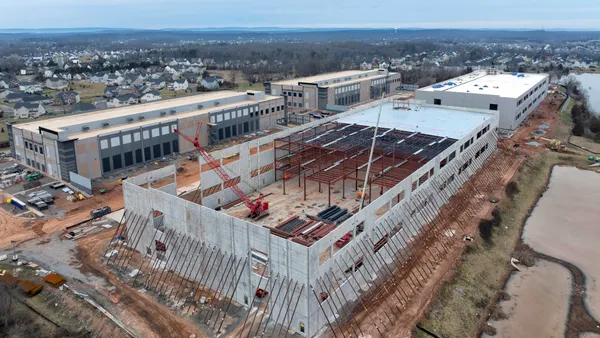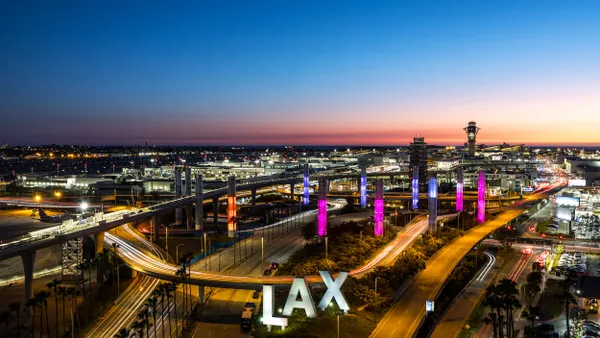Dive Brief:
- The Bayonne Bridge project, which involves elevating a steel bridge without causing huge traffic delays, received an additional $350 to $400 million in funding, raising the total cost from $1.3 billion to $1.7 billion, according to The News & Observer.
- With the goal to allow large cargo ships to pass under the bridge, the design dictated a roadway be built 64 feet above the existing one while vehicles continue use of the lower span.
- Delays, including difficult steel reinforcement work and construction changes to address community concerns, pushed completion of that phase from 2015 to May of this year.
Dive Insight:
The Bayonne Bridge, which originally opened in 1932, is now in its fourth year of massive renovations to accommodate cargo ships passing underneath. With the navigational clearance goals achieved in May, the bridge is closer to its estimated 2019 completion. Once finished, the bridge will boast four 12-foot-wide lanes and a pedestrian-bike lane.
Although the ongoing project is acknowledged as a "successful job," bridge authorities simultaneously describe the nearly 25% cost overrun as "a hard one to swallow."
Another high-profile project with a large budget overrun is Boston's Green Line rail extension. After delays and going over budget by $1 billion, the Massachusetts Bay Transportation Authority terminated contracts with lead companies on the project, including contractor consortium White-Skanska-Kiewit. Three contractors — GLX Constructors, Green Line Partners and Walsh Barletta Granite — are in the running for the $1.3 billion design-build phase of the now $2.2 billion extension; the firms say they can complete the work within the allotted budget. Authorities have not not revealed if they believe the companies can meet the budget goal.
Although not over budget, the pricey Minnesota light rail project, estimated to cost $1.9 billion, is struggling to get funding. In May 2016, the Minnesota state senate failed to pass the funding bill by one vote. However, later that year, the Minneapolis-area regional transportation and planning agency, the Metropolitan Council, and other counties voted to approve necessary funds.
In California, the much-publicized Oroville Dam spillway repairs continue, as costs creep upward. The Mercury News reported in October that costs doubled from $275 million to at least $500 million. Kiewit is overseeing the repairs; officials said after 188,000 people were evacuated in February, they realized the scope of the work required digging deeper than anticipated to reach bedrock and pouring double the concrete.
California has requested that the Federal Emergency Management Association pay for 75% of the repairs, but FEMA is feeling the strain of disasters from hurricanes Harvey and Irma this year. Congressional lawmakers bumped FEMA's funding by $15 billion to help pay for those costs.










